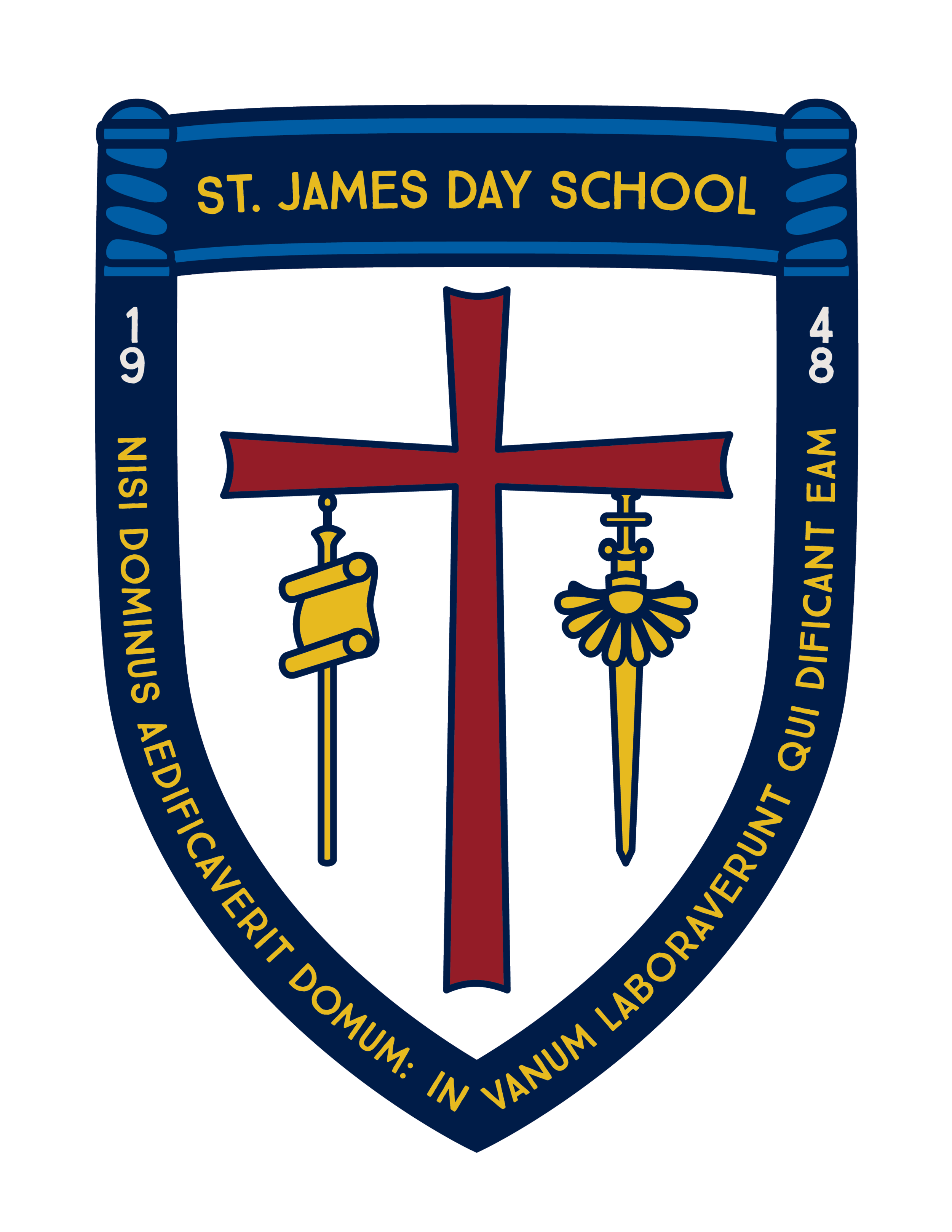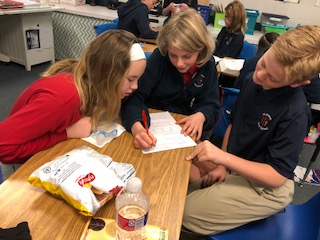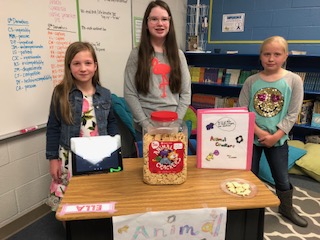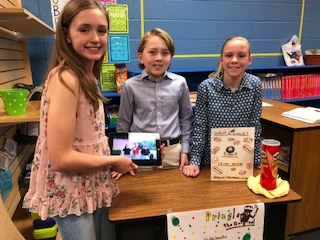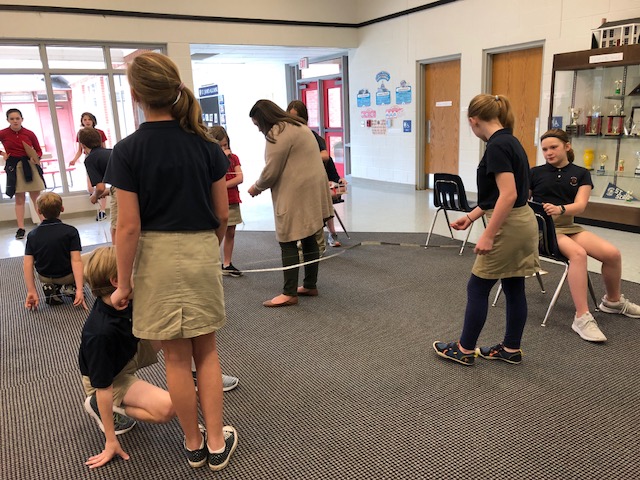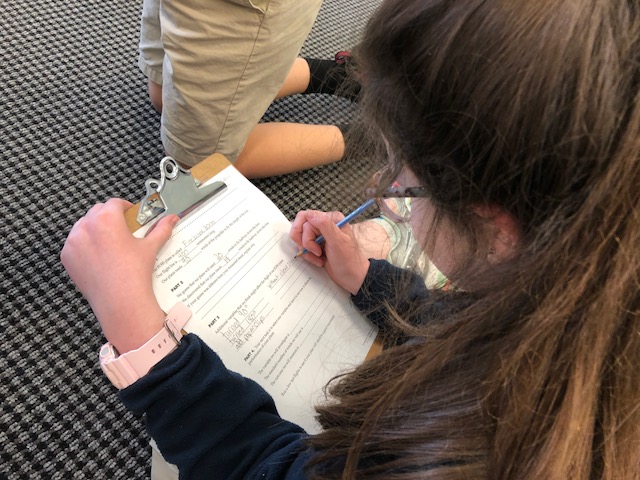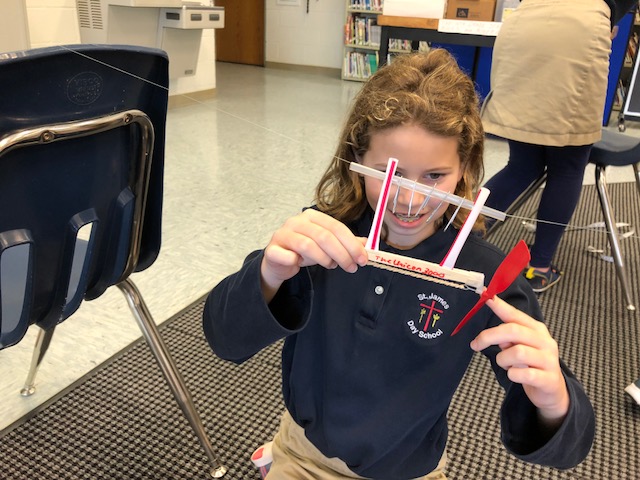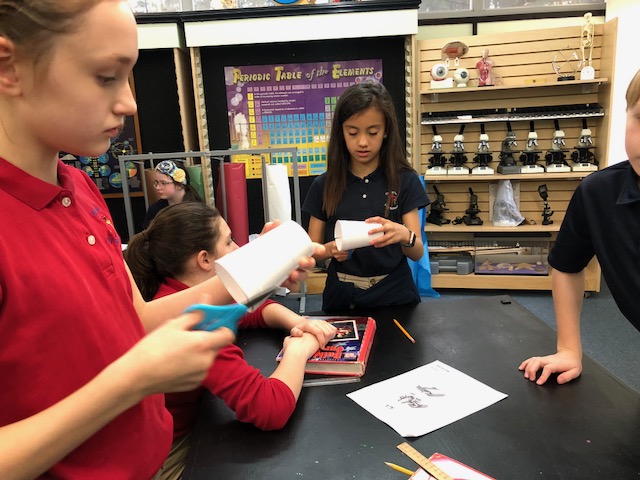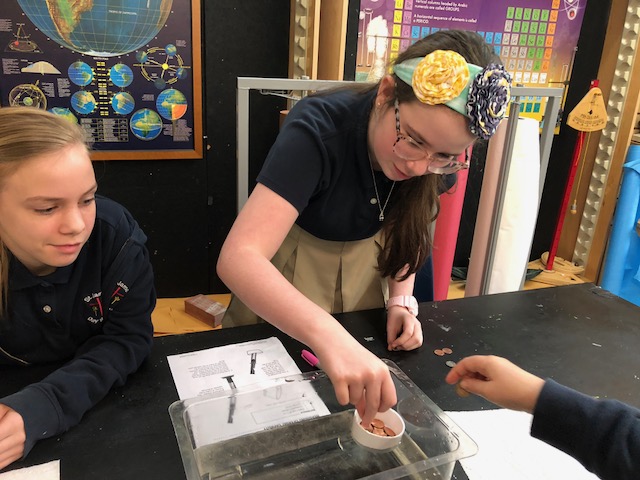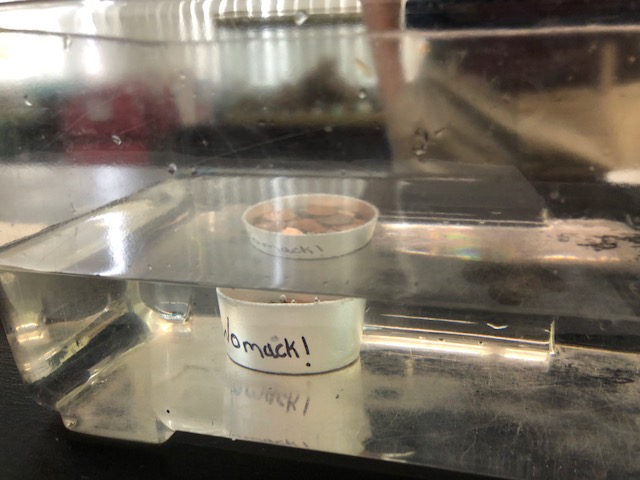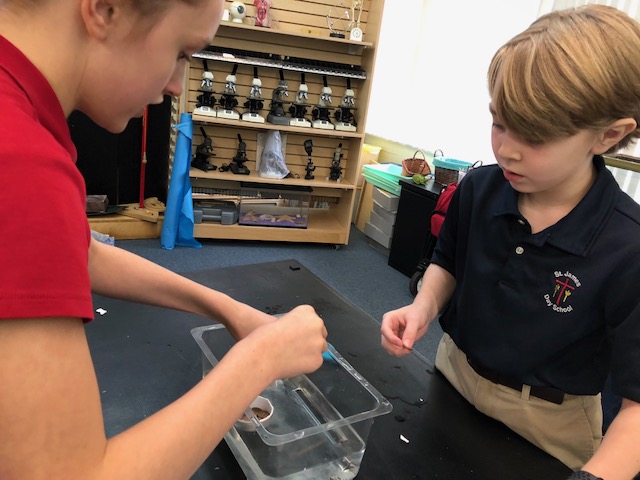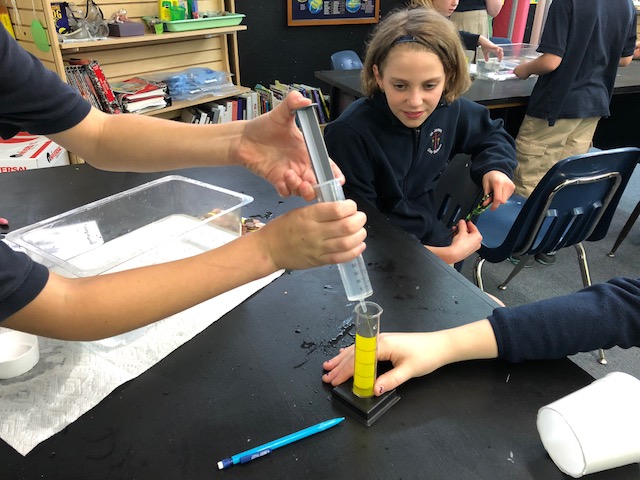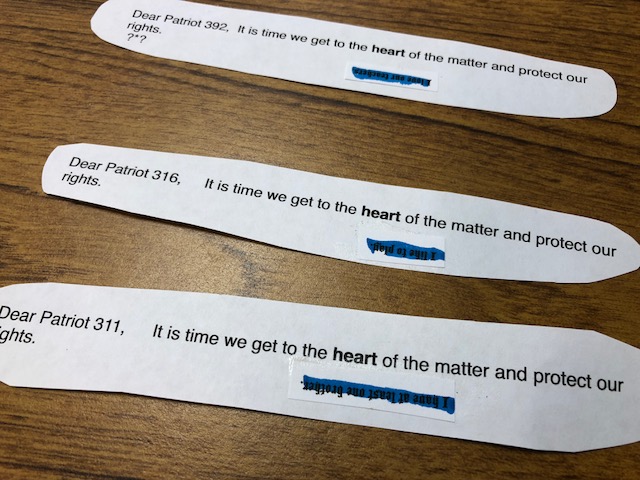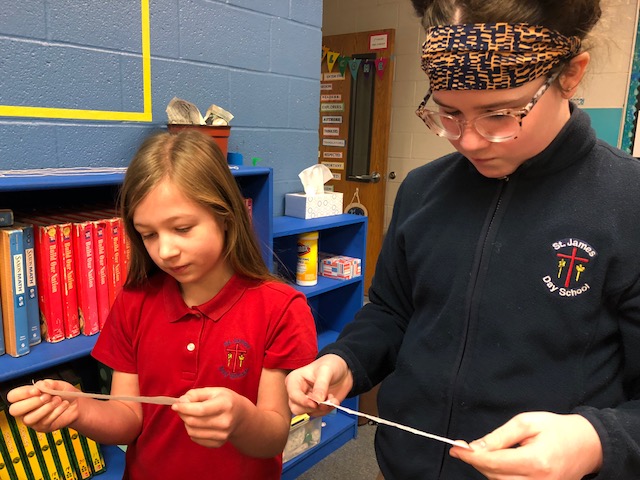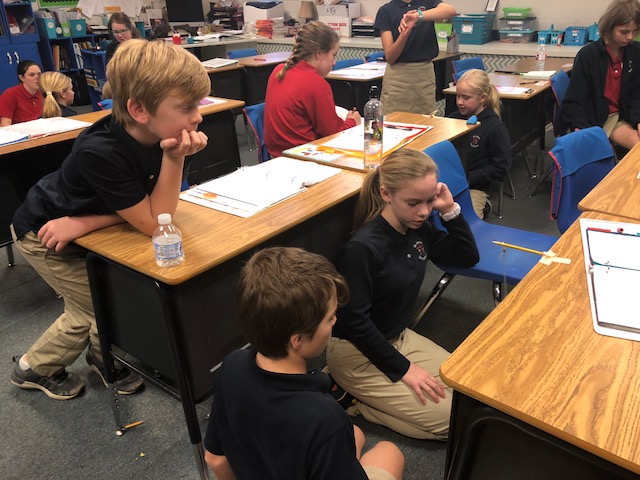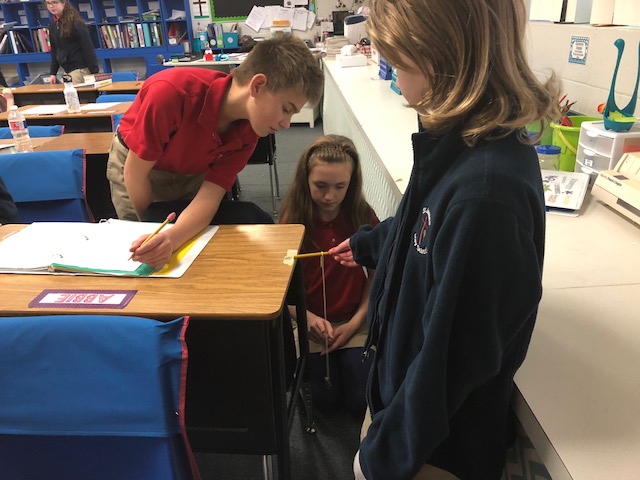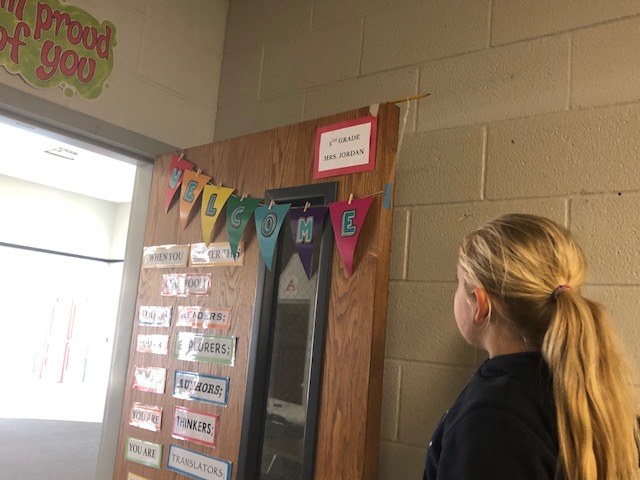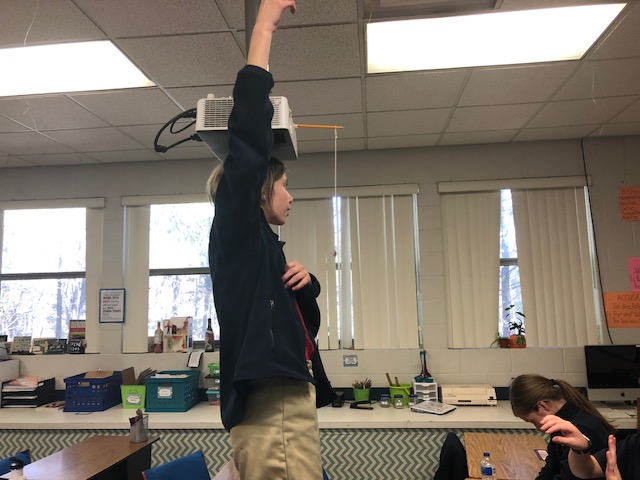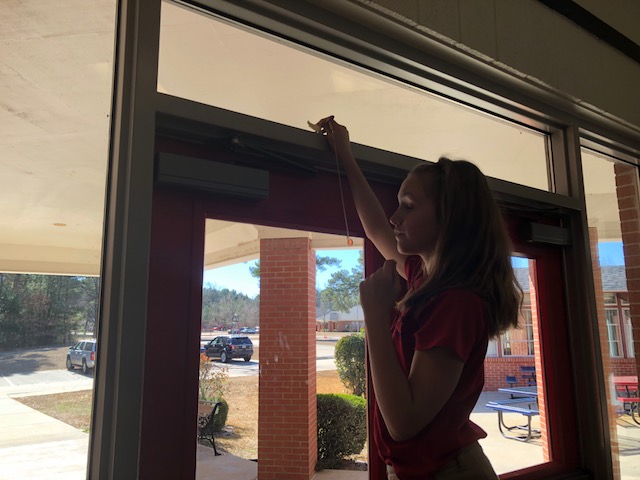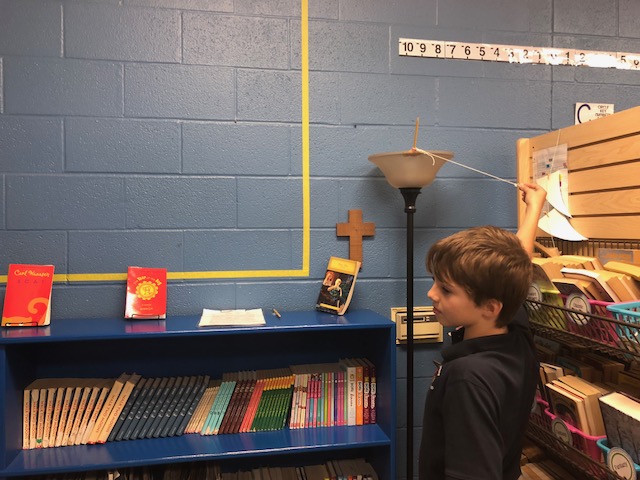Fifth grade just completed our persuasive writing unit. Learning how to convince someone to agree with your position has proven quite a challenge, and students worked hard to do so. One of the most visible forms of persuasive writing is advertisements, and the class finished the unit with a snack food advertising campaign. I introduced students to the job of a copywriter and the idea of the creative brief, which is the key written item in an advertising campaign. Students broke into advertising teams, chose a snack food (Goldfish, Pringles, Lays Original Potato Chips, Animal Crackers, Cheez-Its, and Oreos), and commenced to taste test research to develop their campaign. Snacking for school work! Each student in the team was assigned to design one of three ads: a magazine ad, a billboard, or a television commercial. Students had already created commercials in Technology class, so they were professionals. The final campaigns were presented to the fourth grade class, our clients. Each snack food campaign had to "sell" its product and win over the fourth graders with all three ads and an effective speech. There was some serious competition occurring in our classroom! The ultimate winner was the Cheez-Its group, which won for the best marketing campaign. The favorite snack food in terms of taste, however, was Pringles. What a fun, memorable way to learn how to write and speak persuasively!
The final component of our Variables unit in Science involves planes, and what 5th grader doesn't enjoy flying a plane he or she constructed? The students divided into lab groups and followed a set of instructions to build a plane out of popsicle sticks, straws, a propeller, and the "engine", a rubber band. Then they set up fishing line flight lines of 4 meters in length between two chairs. The goal was to learn how many "winds" of the rubber band it would take to fly the plane the entire length of the line. On the second day of investigation, the groups completed flight logs and conducted various controlled experiments, changing only one variable at a time-- winds, mass, or incline of the flight line. The final day of this investigation brought us self-designed experiments in which students became creative in changing their variables, such as stacking books under chairs, chairs on top of chairs, or removing parts of the plane to see if it would still fly. This is definitely a 5th grader's idea of a fun Science lab!
On the heels of a successful Science Fair, fifth graders are tackling variables again in Science. This week, we used our math skills to construct "life boats" of 3 centimeters in height and floated pennies as our boat passengers. Students made hypotheses as to how many pennies their boats could hold before sinking. We had quite a range in numbers, which was interesting. Could it have been passenger placement, boat construction, or mass of the pennies? We also tested the capacity of each boat by filling it to the brim with water, sucking out the water with a syringe, and measuring it in a graduated cylinder. We'll be making boats of various heights-changing our variable- and testing those on Friday. Not only will students graph their results, but they will apply this week's math concepts of mean, median, mode, and range to find these elements in their data.
Fifth grade has been serving as spies conveying coded messages to teachers in our building. In conjunction with our American Revolution study, we learned about the Culper Spy Ring. This spy ring--the first successful espionage ring in America--operated out of Long Island to aid George Washington in identifying British maneuvers, and ultimately helped to win the revolution. To extend our lesson, fifth graders wrote secret messages in code, similar to the coding used by the Culper spies, for a few teachers. The teachers had to decipher our messages by studying a series of numbers. Of course, these wonderful teachers enriched our lesson even more by starting their own decoding project with our class. For the last week, 5th graders have received clues in code themselves. They are now engaged in solving the mystery of their secret "admirers." Will they be successful?
Fifth graders are preparing Science Fair projects that will be displayed in February. Along with planning, organizing, and engaging in all elements of the scientific method, an important aspectsof this project involves testing a variable. Students must conduct controlled experiments and change only one variable at a time so that they can accurately understand and record the effects their variable has on their experiment. To practice working with variables, we are doing several experiments in the classroom. This week's experiment involves hanging a pendulum (a simple string with a paper clip tied to one end and a penny as the weight) and recording the number of cycles the pendulum swings in 15 seconds. Lab groups all began testing the release of position of the pendulum. All other variables remained constant. Groups then proceeded to test the number of cycles in 15 seconds by changing only the height from which the pendulum hung. Finally, they added more mass to the pendulum and recorded those cycles while keeping the height and release of position the same. This is an interactive way to test variables and think about how one factor affects the outcome of an experiment. Plus, who doesn't like to get on chairs and find the highest possible surface from which to test!
